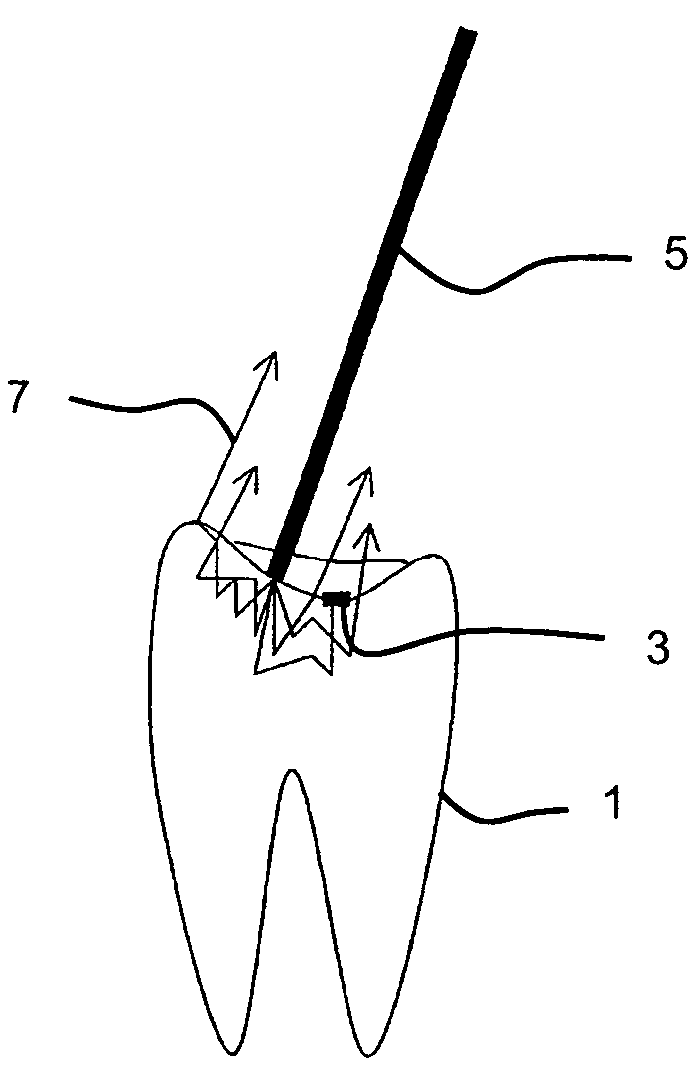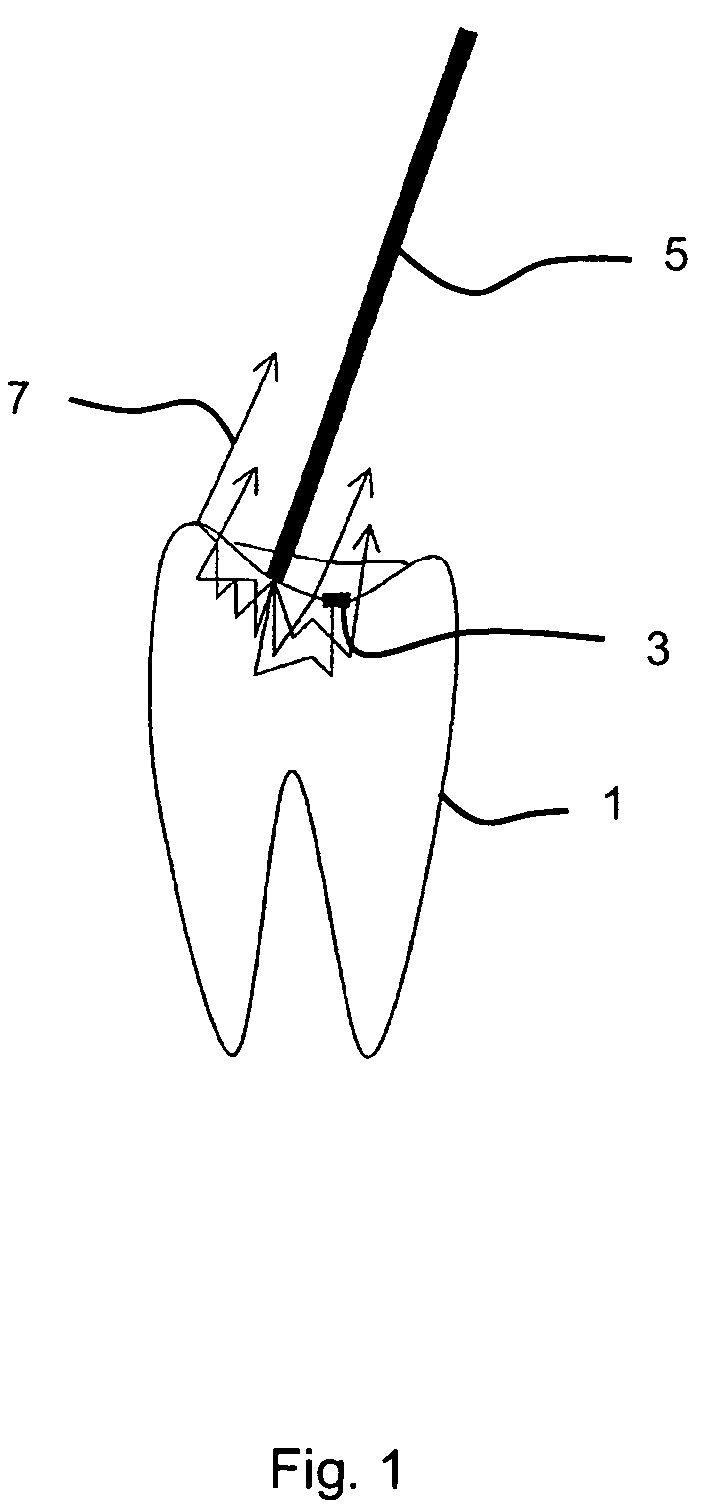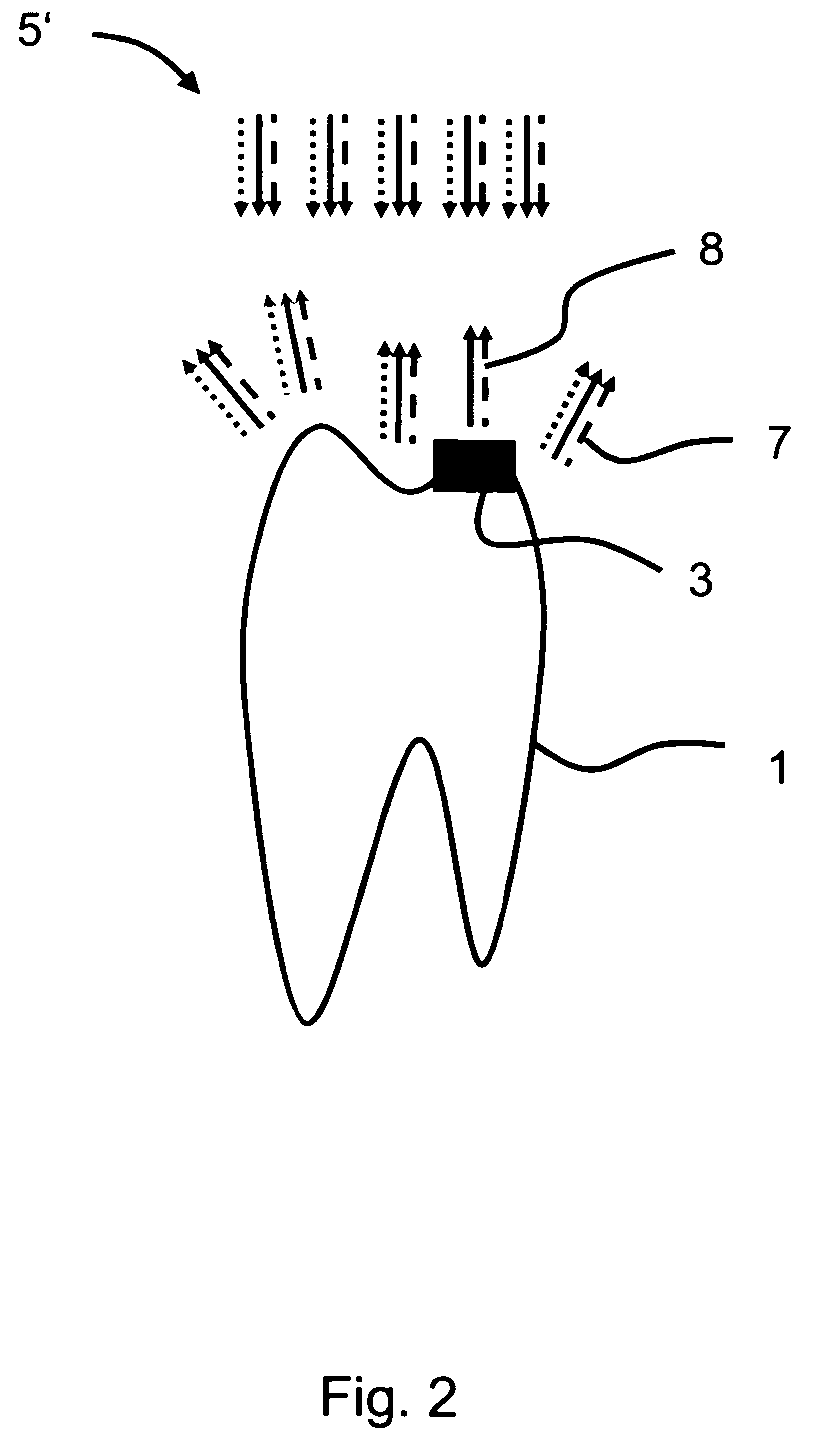Method for identifying tooth-colored tooth filling residues
a technology of tooth filling and residue, which is applied in the field of method and apparatus for identifying tooth filling residue, can solve the problems of difficult to distinguish healthy teeth from healthy teeth, complicated apparatus, and difficulty in seeing whether the filling has been completely removed, and achieves the effects of fewer fluctuations, convenient for dentists, and easy detection of tooth filling residues
- Summary
- Abstract
- Description
- Claims
- Application Information
AI Technical Summary
Benefits of technology
Problems solved by technology
Method used
Image
Examples
first embodiment
[0038]the method according to the invention is described hereinafter with reference to FIG. 1.
[0039]Referring to FIG. 1 illustrated therein are a tooth 1, a tooth filling residue 3 and a light beam 5 with which the tooth 1 is irradiated in a locally limited region. In the radial direction the light beam 5 involves the hat top profile illustrated in FIG. 8 as its intensity profile and is preferably formed from coloured and in particular monochromatic light. The wavelength or wavelengths of the light beam 5 is or are so selected that the light is strongly scattered by the tooth material, in particular the dentine, but is greatly absorbed by the tooth filling material. In the present embodiment red or green light is used. The light scattered by the tooth material then issues inter alia around the irradiated region, as is indicated by the arrows 7 in FIG. 1. Therefore a coloured halo appears around the illumination point. The scattered light is however absorbed by the tooth filling mate...
second embodiment
[0042]FIG. 2 shows the method according to the invention. In this embodiment the tooth is irradiated with light 5′ over a large area. The light used for the irradiation procedure involves a spectrum with irregularly distributed wavelengths and is preferably of an intensity which is substantially constant over the entire irradiation cross-section. It appears white however in the blend of the wavelengths. In the illustrated embodiment the spectrum includes red, green and blue light, as is indicated in FIG. 2 by dotted, solid and broken lines respectively. The light 5′ is scattered by the tooth material and a part of the scattered light 7 issues from the tooth 1 again. As the tooth material, in particular the dentine, scatters visible light only with a very low level of wavelength dependency, the scattered light 7 appears substantially white like the light 5′ with which the tooth 1 is irradiated.
[0043]In contrast to the tooth material however the tooth filling material involves wavelen...
fifth embodiment
[0060]the apparatus according to the invention is shown in FIG. 7. The apparatus 50 includes a light source 52 and an optical irradiation means 51, by means of which the tooth can be irradiated with the light from the light source in particular over a large area and uniformly. It is also advantageous in this embodiment if the beam cross-section involves a constant intensity distribution.
[0061]The light source 52 is of such a nature that its colour temperature can be varied by means of an adjusting device 53 connected to the light source. For the purposes of identifying tooth filling residues, the colour temperature can be varied by means of the adjusting device until a colour temperature is set, at which the tooth filling material differs from the tooth material. If the scattering or absorption characteristics of the tooth filling material are known, the colour temperature can also be already set prior to the irradiation procedure, in such a way that the tooth filling material can b...
PUM
| Property | Measurement | Unit |
|---|---|---|
| wavelengths | aaaaa | aaaaa |
| brightness | aaaaa | aaaaa |
| temperature | aaaaa | aaaaa |
Abstract
Description
Claims
Application Information
 Login to View More
Login to View More - R&D
- Intellectual Property
- Life Sciences
- Materials
- Tech Scout
- Unparalleled Data Quality
- Higher Quality Content
- 60% Fewer Hallucinations
Browse by: Latest US Patents, China's latest patents, Technical Efficacy Thesaurus, Application Domain, Technology Topic, Popular Technical Reports.
© 2025 PatSnap. All rights reserved.Legal|Privacy policy|Modern Slavery Act Transparency Statement|Sitemap|About US| Contact US: help@patsnap.com



